Empowering Early Readers: Navigating Dyslexia & Other Literacy Challenges (Part 2)
- Kara Cook (Writer)

- Oct 13, 2023
- 4 min read
Dyslexia & Other Literacy Challenges:
Recognising and Helping Early Readers
at home & school
Welcome back to my 3-part series: Dyslexia & Other Literacy Challenges. In Part 1, we explored the early signs of literacy challenges in our budding young readers.
In Part 2 "Empowering Early Readers: Navigating Literacy Challenges and Dyslexia" we'll be diving deeper to explore the six vital signs, with a special focus on dyslexia. Join me as we uncover the secrets to empowering these young literary explorers!

A Guide for Parents: 6 Ways to Spot Dyslexia & Other Literacy Challenges in Your Early Reader (part 2)

Let's continue our journey by understanding these signs and discovering ways to support our budding readers both at home and school. Here are 6 essential tips to understand the early warning signs of struggling readers.
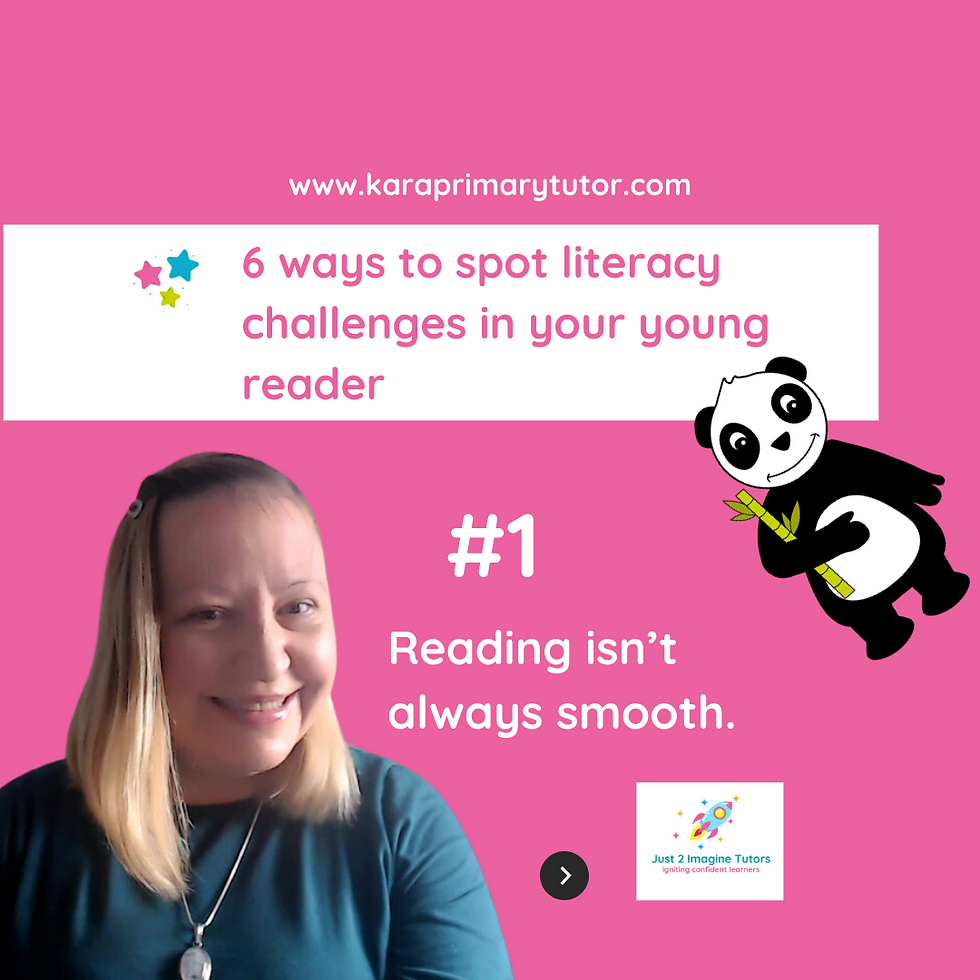
1. Reading Isn't Always Smooth
As young readers advance to short phrases or sentences, the ones on the dyslexia spectrum will be unlikely to read them fluently. That's because all their mental energy goes into sounding out words, preventing them from reading automatically, and therefore easily, like skilled readers.
When this happens, fluent reading is too hard or it isn't happening. This is often noted in the first term of Reception when reading instruction becomes more formal.
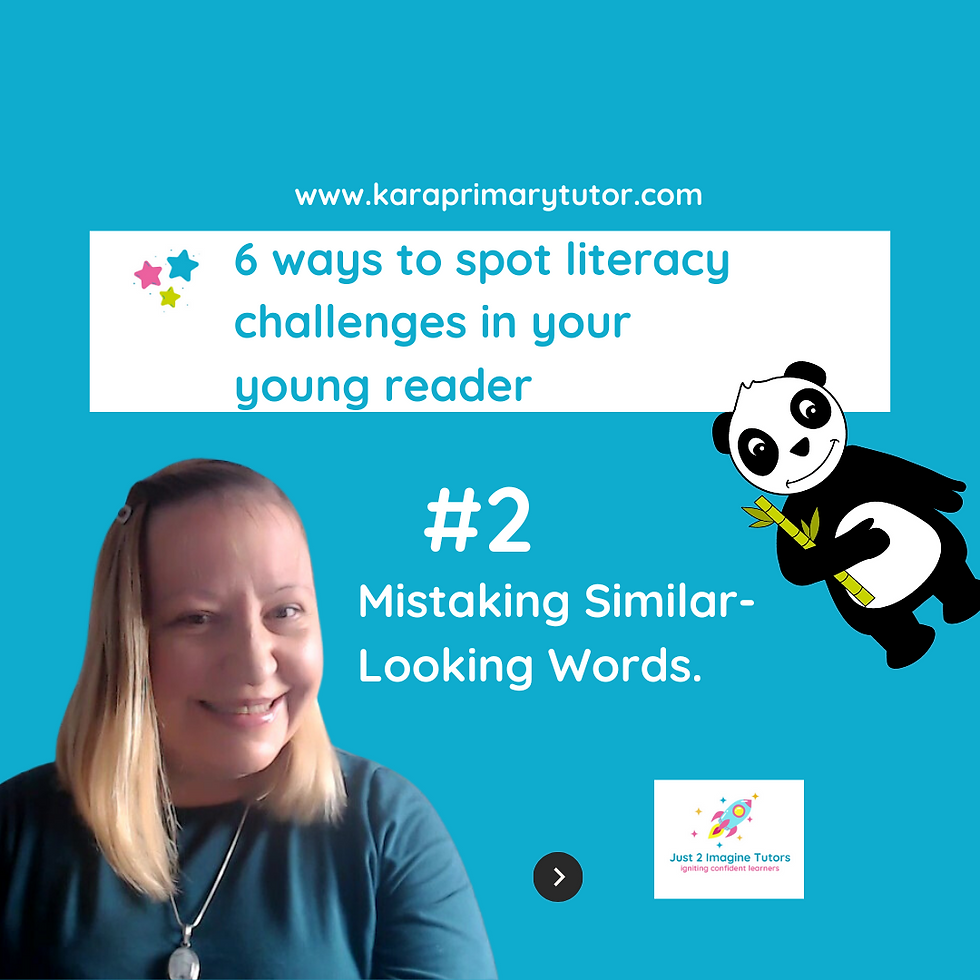
2. Mistaking Similar-Looking Words
Dyslexic readers often confuse similar-looking words by reading one word as another. Frequent occurrences could hint at dyslexia. One of the reasons for this is just the effort of reading words, and effortful processes are prone to mistakes. Another reason is that dyslexic learners often do not comprehend what they read and so similar-looking words become interchangeable because that process of "hold on, this doesn't make sense, let me read that again" doesn't kick in for dyslexic learners.
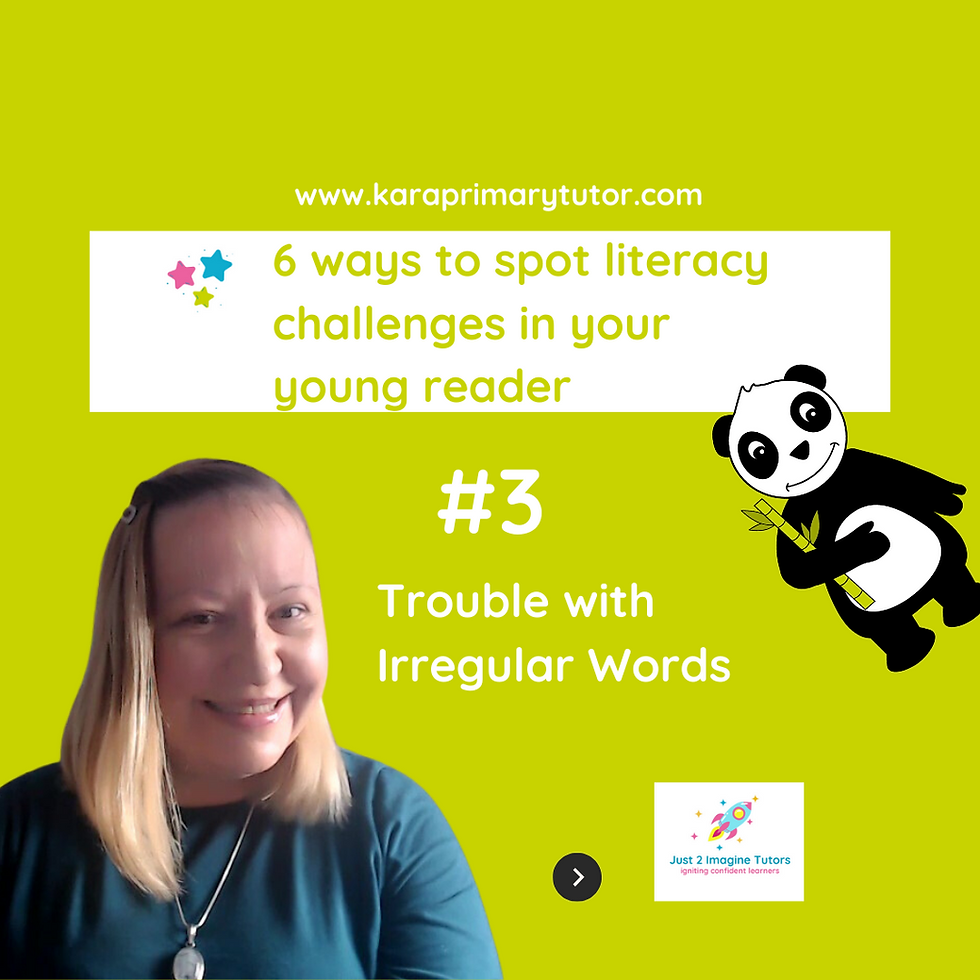
3. Trouble with Irregular Words
Early readers learn to sound out words, like c-a-t/cat, as the first strategy they are taught. But with so many irregular words in the English language, children find this strategy is not always helpful as it doesn't always work. There are those "sight words" or "tricky words" like here and some and once that are impossible to sound out-they need to be read in one go, automatically.
Children who persistently try to sound out these words are relying on the only strategy they know, and this can be an indication of dyslexia.
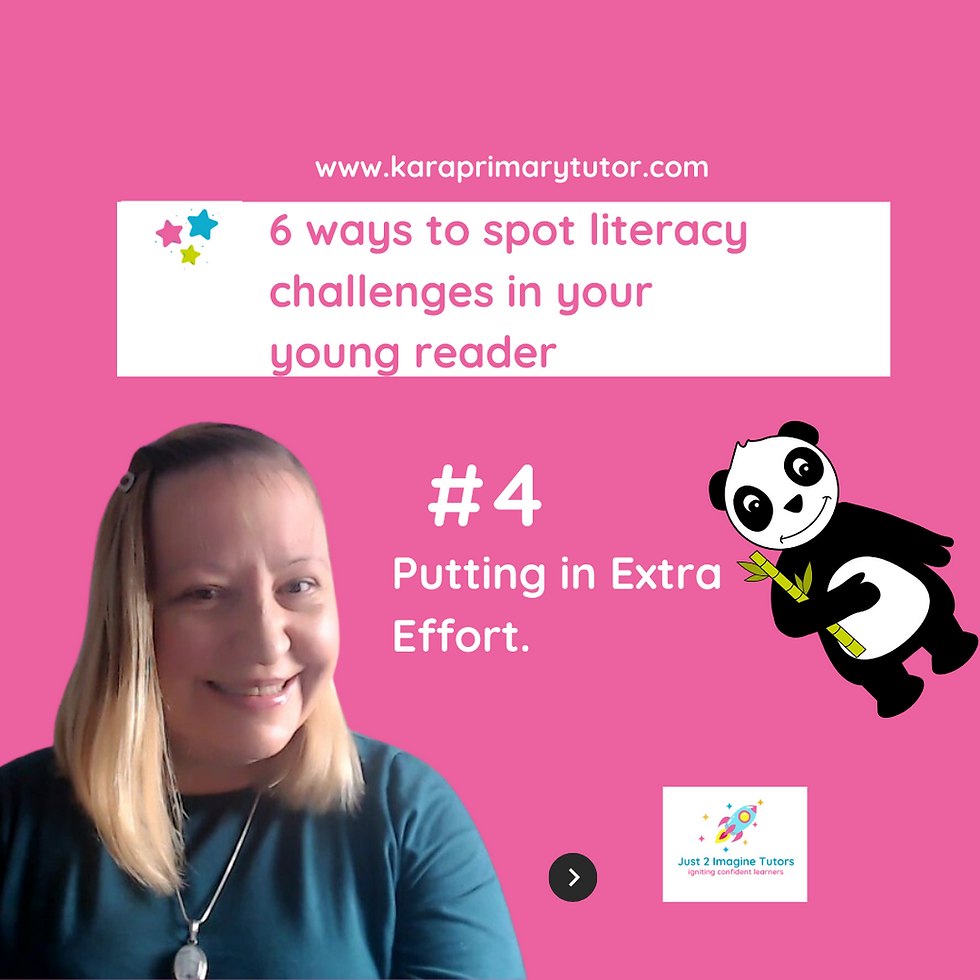
4. Putting in Extra Effort
Some children put in extra effort and work so much harder than everyone else to compensate for their difficulties, but only get poor to average results. This can be where dyslexia can affect their mental health and self-esteem.
If this describes your child, it is essential to provide support.
Also, be alert to when your child puts in incredible levels of hard work but gets about the same results as the children who are not on the dyslexia spectrum.
That level of effort is exhausting and is hard to maintain, especially as work gets harder. In this case, if your child is assessed, the results are often at the lower end of the spectrum but not low enough for a "diagnosis" of dyslexia.
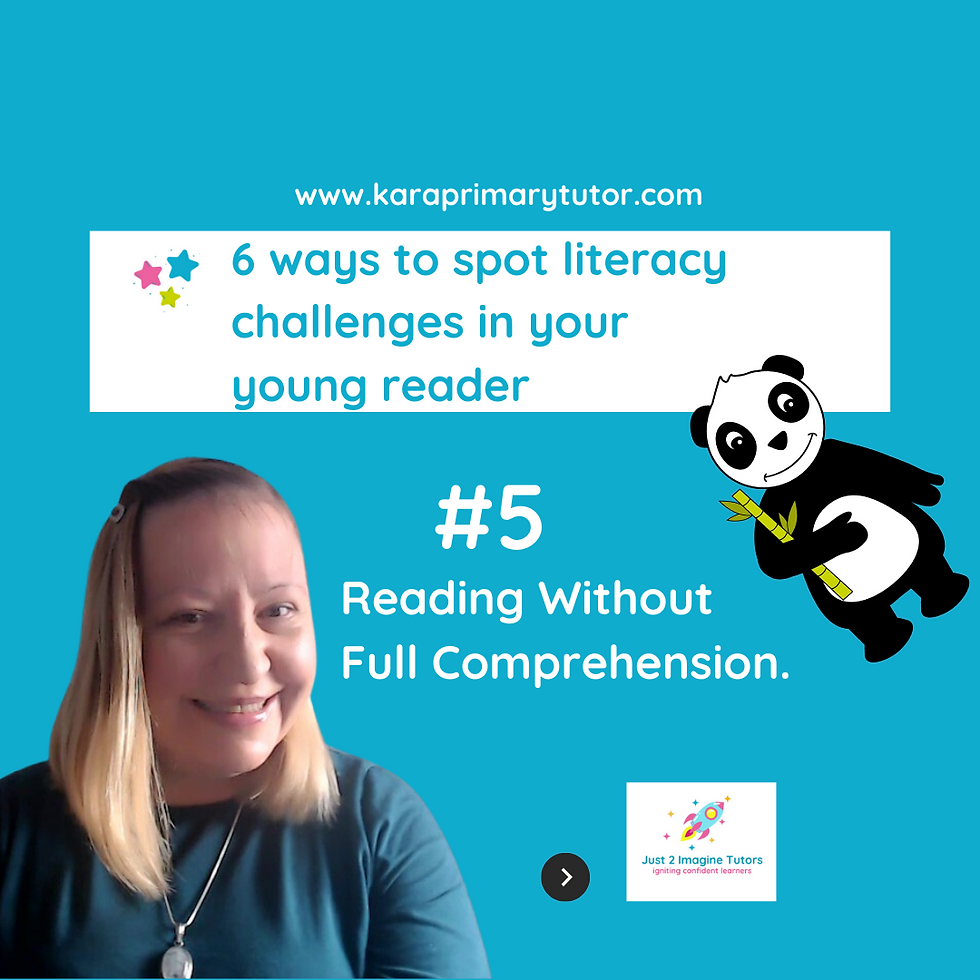
5. Reading Without Full Comprehension
"Fluent" reading doesn't always mean full comprehension. Some young readers decode words efficiently but struggle to grasp the content. It's crucial to differentiate between reading and understanding.
These children fall into the group on the dyslexia spectrum who are called "poor comprehenders" and while this tends to show up a bit later in the journey of learning to read, it's one to watch out for. It's those learners who read fluently but fail to comprehend what they have read. This is because all of their effort is used for reading words so there is no capacity left over to understand what they have read. It's easy to mistake fluent reading for reading with understanding, but they are often very different things.
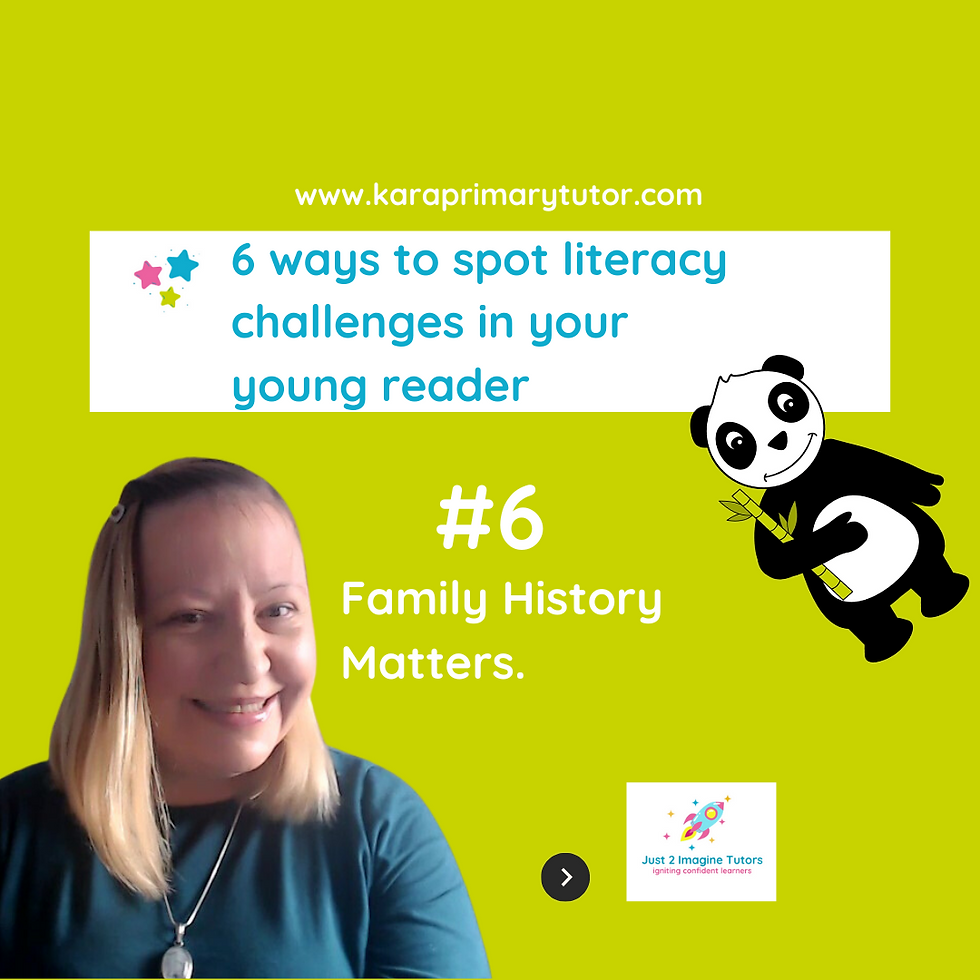
6. Family History Matters
Dyslexia is genetic and often runs in families. According to Understood.org about 40 percent of siblings of kids with dyslexia also have reading challenges. Additionally, as many as 49 percent of their parents do, too.
Exactly how genetics leads to dyslexia is complex and not fully understood yet. As a result, it may skip a generation, or it may only show up in one child and not their siblings.
Because it was not fully recognised until fairly recently, clues are that older relatives might share negative stories of their school struggles due to unrecognised difficulties. The chances are that they did not go into jobs that require lots of reading and writing. Recognising these patterns in family history can be a vital clue for identifying dyslexia in younger children. Once you know what you are looking for, it all falls into place pretty easily.
Understanding the early indicators of struggling readers is like discovering hidden treasures in the realm of literacy. That is why taking proactive steps can significantly impact a child's literacy development. In our final blog part, I’ll reveal practical strategies and valuable resources to champion children with literacy differences, ensuring their success in reading and writing. Stay tuned for more!
Are you concerned about your child's literacy development or suspect they may have dyslexia?
Does your child come home from school tearful because their peers are so much better at reading?

This kind of anxiety and pressure will turn them away from reading for good if you don't take action to support them.

Good news, I can help! As an experienced online reading tutor, I am trained to identify the signs of dyslexia and other literacy challenges and provide tailored support.
Let's work together to empower your young reader. Reach out to me for guidance and support on your journey.
Email me at kara@just2imaginetutors.com or book a call to get started.
Your child's literacy success is just a click away!




Comments